September 8, 2015
Posted in 2015 Minidoka Pilgrimage, Minidoka, Minidoka Pilgrimage tagged 2015 Minidoka Pilgrimage, Executive Order 9066, Japanese American Incarceration, Minidoka, Minidoka National Historic Site, Minidoka Pilgrimage, Pilgrimage at 5:23 pm by minidokapilgrimage
http://www.napost.com/2015/08/13/minidoka-pilgrimage-throws-new-mission-to-youger-generations/
By Fumika Iwasaki
The North American Post
The 11th annual Minidoka Pilgrimage was held from June 25 to June 28, and I joined the event as a scholarship recipient of the committee. On the four-day tour, about 200 participants had the chance to visit Minidoka National Historic Site, a former Japanese American incarceration camp site, and to hear stories from those who were incarcerated, researchers and activists.
This year marked the 70th anniversary of the ending of World War II. People who can share firsthand experiences of incarceration are aging, and their number has been decreasing every year.
In this pilgrimage, the great majority of pilgrims were in their 70s or 80s and actually experienced World War II or in their 40s or 50s with parents or relatives who were incarcerated. Meanwhile, about 10% of participants were younger than 30.
Youth had a chance to gather in a session on the second day and discuss and share their thoughts on the pilgrimage, reasons to participate in the pilgrimage this year and how to preserve the history for the next generation.
Preserving history is not easy.
“My grandmother and grandfather were incarcerated, but they did not want to talk about it,” one said, while others added, “My grandmother and grandfather already passed away so I cannot hear about it.”
In Japan, there are usually few chances to learn about Japanese American history. But surprisingly, I also realized that pilgrimage participants told me that some American text books cover Japanese American history in only half a page.
This pilgrimage has significant meaning because youth can visit a historic site and hear about experiences and research of the Japanese American incarceration.
“They had only one room per family, so they had no privacy except in the bathroom,” one speaker said in the legacy session of the pilgrimage program.
Their housing situation was extremely bad as they suffered from dust because of cracks in the floors of the barracks. As all pilgrims experienced, the summer is hot and heavy snows comes in the winter.
But through this tour, I also learned about efforts to make incarceration camps active and livable. As Kay Sakai Nakao said, “Through the negatives, a lot of positives happened,” the Nikkei in the incarceration camp lived with more than sadness. The documentary shown in the educational session shared stories of their making furniture and toys for Christmas.
“Near my house, there still remained a custom that older people took care of younger people, so older people made toys for me,” said Kanji Sahara.
In the warehouse site at the Minidoka National Historical Site, a National Park Service guide said, “From the second year of incarceration, people exchanged food amongst themselves to eat more varieties of food.”
Still, the historic and unjust experiences cannot be changed.
“Some people were put in jail without proper process,” said Harriet Miyasato Beleal. “We have so many civil rights.”
When Japanese people who live in Japan hear about compulsory interment during World War II, they might think of concentration camps such as Auschwitz. For Japanese Americans however, there were no compulsory labor or genocide, but they were forced to leave their homes, and some of them were sent to jail unconditionally. Regardless of homeland or race, to prevent racial discrimination like compulsory internment, we have to learn about history as a problem of human rights.
“We are looking for Sansei and Yonsei to tell the story we heard this pilgrimage,” said Don Shimono, a Minidoka Pilgrimage committee member.
It depends on the next generation to keep the history of incarceration in people’s memories. As one of them, I have been questioning myself after this pilgrimage.
Permalink
February 24, 2015
Posted in 2015 Minidoka Pilgrimage, Friends of Minidoka, Japanese American Incarceration, Minidoka, Minidoka Pilgrimage, News tagged 2015 Minidoka Pilgrimage, Executive Order 9066, Japanese American Incarceration, Minidoka, Minidoka National Historic Site, Minidoka Pilgrimage, Pilgrimage, Registration at 9:30 am by minidokapilgrimage
Press Release – For Immediate Release
2015 Minidoka Pilgrimage June 25 – June 28, 2015
Announcing the 13th Annual Minidoka Pilgrimage
Seattle, WA – February 24, 2015 –
The Minidoka Pilgrimage Planning Committee announces the 2015 pilgrimage dates are Thursday, June 25 through Sunday, June 28, 2015.
In 1942, almost 13,000 people of Japanese-ancestry living in Washington and Oregon, many of whom were American citizens, were removed from their homes and sent to a desolate “concentration camp” near Twin Falls, Idaho. This summer, the 13th pilgrimage will take place with former incarcerees, their families, and friends – from Seattle, Portland and across the nation – to the former Minidoka Camp in Idaho. This is an opportunity to learn, share memories, and ask questions about the Minidoka experience. Consider participating as a way to bring your family together and reconnect with friends. Participation is limited.
The Minidoka Pilgrimage officially begins in Twin Falls, Idaho on Thursday evening, June 25, for dinner. On Friday, this year will feature a full day of educational programming. On Saturday, the group tours the Minidoka National Park Site followed with small group discussions to learn and share experiences of the incarceration experience. On Sunday morning, we will conclude our pilgrimage with a commemorative closing ceremony at Minidoka National Park Site.
Pilgrimage Details
Registration forms and additional information for the pilgrimage can be found at www.minidokapilgrimage.org.
There are two different registration packages:
· The Seattle/Bellevue package includes bus transportation from Bellevue, Washington to Twin Falls, Idaho. The registration fee is $400.00.
· The Boise/Twin Falls Package requires participants to provide their own transportation to Twin Falls, Idaho. The price is $200.00. **There is a discount on both packages for children under 12 and seniors 75 years and older.
The registration fee includes meals and all activities during the pilgrimage. Lodging must be made by each participant. Please review the Hotel and Information document and the Registration Form for more information on Pilgrimage packages (Seattle and Twin Falls). This information can be found on the Minidoka Pilgrimage web site at: www.minidokapilgrimage.org.
The Minidoka Pilgrimage Planning Committee is excited to once again offer a SENIOR SCHOLARSHIP for those who are over 80 years of age and were imprisoned in any of the American concentration camps during WWII. Please review the Senior Scholarship Registration Form to apply for the scholarship.
All forms and information can be found on the Minidoka Pilgrimage website at: www.minidokapilgrimage.org.
For other questions or concerns, please feel free to contact us at minidokapilgrimage@gmail.com.
For those who cannot access the forms and information by computer, please leave your name and address with Dale H Watanabe at 206-296-6260 and they can be mailed to you.
Contact: Dale H Watanabe
(206) 296-2156
watanad@seattleu.edu
###
Permalink
June 10, 2014
Posted in 2014 Minidoka Pilgrimage, Friends of Minidoka, Japanese American Incarceration, Minidoka, Minidoka Pilgrimage, News, Photos tagged 2014 Minidoka Pilgrimage, Bainbridge Island, Executive Order 9066, International Examiner, Japanese American Incarceration, Minidoka, Minidoka Pilgrimage, Pilgrimage, Stanley Shikuma at 8:17 am by minidokapilgrimage
http://www.iexaminer.org/2014/06/minidoka-memory-and-survival-captured-in-literary-works/
Minidoka: Memory and survival captured in literary works
STAN SHIKUMA JUNE 9, 2014

In 1942, almost 13,000 people of Japanese ancestry, many of whom were American citizens, were removed from their homes and sent to a desolate incarceration camp near Twin Falls, Idaho. Japanese Americans spent nearly three years incarcerated at Minidoka and other camps during World War II. Today, the Minidoka site continues to hold a mixture of memories and strong emotions—feelings of denial, distrust, shame, and joy.
—Minidoka Pilgrimage Planning Committee
The memories won’t die and the legacy lives on in generations that never lived inside the barbed wire of Minidoka. This is due in large part to the work of groups like the Minidoka Pilgrimage Planning Committee and Friends of Minidoka who continue to raise consciousness around the Japanese American concentration camp experience and the designation of Minidoka as a National Historic Site.
Credit is also due to the work of many authors, scholars, filmmakers, photographers and journalists who continue to research and write about the incarceration and removal, finding new details, new stories, and new connections that help keep the story alive and relevant to the present.
Two such works were recently published. One is a book by photojournalist Teresa Tamura and the other is a compilation of essays edited by historians Russell M. Tremayne and Todd Shallat.

Minidoka: An American Concentration Camp
By Teresa Tamura
Caxton Press, 2013
Tamura’s Minidoka chronicles the author’s own journey from a passive state of ignorance and embarrassment about Minidoka to a passionate desire to unearth and illuminate the history of the people and the place. As a photojournalist, she achieves this largely through the photos she takes of people, sites, and artifacts associated with Minidoka and the explanatory captions supplied.
Through her research, well documented in footnotes and bibliography, Tamura reveals several little known facts and provides a clear historic context. The author’s intro and a special essay by Mitsuye Yamada make fascinating reading, but the heart of the book lies in the black and white photographs taken by the author.
Tamura includes many voices in her book, providing us with the photos and perspectives of those who lived or worked in the camp; those who left Minidoka for school, work, the army or prison; those who were actually born in camp; and those who worked to keep the memories alive through organizing, teaching, speaking, writing, art, literature, and poetry. She gives a voice, a name, a face, and a historical backdrop to each portrait.

Surviving Minidoka: The Legacy of WWII Japanese American Incarceration
Russell M. Tremayne and Todd Shallat, editors
Boise State University, 2013
In Surviving Minidoka, editors Tremayne and Shallat preserve 10 “essays and insights from the College of Southern Idaho’s annual Minidoka Civil Liberties Symposium. Contributors, in pictures and words, honor the enduring spirit of nidoto nai yoni: “let it not happen again.” (Tremayne, from An American Tragedy).
The pieces range from historical scholarly works like that of Professor Greg Robinson on Mixing the Races, to personal remembrances from artist Roger Shimomura and the late Frank Kitamoto, to reflections on specific topics or personalities like Anna Hosticka Tamura’s piece on Minidoka Gardens or Russell M. Tremayne’s piece on Nakashima woodworker. Interspersed throughout are poems and excerpts from the writings of Lawrence Matsuda, Mitsuye Yamada, Lawson Fusao Inada, and others.
Like any collection of writings by several authors, the leap from one essay to the next is sometimes wide, both in style and content. Taken as a whole, however, the 10 essays, punctuated with numerous ancillary photos and writings, create a nuanced picture of Minidoka concentration camp and of the social milieu in which it was created: early 20th century America.
Viewed side by side, Minidoka and Surviving Minidoka offer a stark contrast: one in muted black and white with a single narrative and author, the other a busy full-color volume with multiple viewpoints and far-ranging topics. Both, however, are artistically attractive, both apt to kindle some emotional response, each with a unique take on one of America’s ten concentration camps of WWII: Minidoka.
The 2014 Minidoka Pilgrimage takes place from June 19 to 22. This 11th pilgrimage will take place with former incarcerees, their families, and friends—from Seattle, Portland and across the nation—to the former Minidoka Camp in Idaho. For more information, visit www.minidokapilgrimage.org.
Permalink
March 20, 2014
Posted in 2014 Minidoka Pilgrimage, Friends of Minidoka, Honor Roll, Japanese American Incarceration, Minidoka, Minidoka Pilgrimage, News tagged 2014 Minidoka Pilgrimage, Executive Order 9066, Japanese American Incarceration, Minidoka, Minidoka National Historic Site, Minidoka Pilgrimage, Pilgrimage, Registration at 9:02 am by minidokapilgrimage

Press Release – For Immediate Release
2014 Minidoka Pilgrimage
June 19 – June 22, 2014
Announcing the 12th Annual Minidoka Pilgrimage and the 72nd Anniversary of the signing of Executive Order 9066
Seattle, WA – March 4, 2014
The Minidoka Pilgrimage Planning Committee announces the 2014 pilgrimage dates are Thursday, June 19 through Sunday, June 22, 2014.
Registration forms and additional information for the pilgrimage can be found at www.minidokapilgrimage.org.
There are two different registration packages:
• The Seattle/Bellevue package includes bus transportation from Bellevue, Washington to Twin Falls, Idaho. The registration fee is $385.00.
• The Boise/Twin Falls Package requires participants to provide their own transportation to Twin Falls, Idaho. The price is $185.00. **There is a discount on both packages for children and seniors 75 years and older.
The registration fee includes meals and all activities during the pilgrimage. Lodging must be made by each participant. Please review the Hotel and Information document and the Registration Form for more information on Pilgrimage packages (Seattle and Twin Falls). This information can be found on the Minidoka Pilgrimage web site at www.minidokapilgrimage.org.
Pilgrimage Details
In 1942, almost 13,000 people of Japanese-ancestry living in Washington and Oregon, many of whom were American citizens, were removed from their homes and sent to a desolate “incarceration camp” near Twin Falls, Idaho. This summer, the 12th pilgrimage will take place with former incarcerees, their families, and friends – from Seattle, Portland and across the nation – to the former Minidoka Camp in Idaho. This is an opportunity to learn, share memories, and ask questions about the Minidoka experience. Consider participating as a way to bring your family together and reconnect with friends. Participation is limited.
The Minidoka Pilgrimage officially begins in Twin Falls, Idaho on Thursday evening, June 19, for dinner. On Friday, this year will feature a full day of educational programming. On Saturday, the group tours the Minidoka National Park Site followed with small group discussions to learn and share experiences of the incarceration experience. On Sunday morning, we will conclude our pilgrimage with a commemorative closing ceremony at Minidoka National Park Site.
The Minidoka Pilgrimage Planning Committee is excited to once again offer a SENIOR SCHOLARSHIP for those who are over 80 years of age and were imprisoned in any of the American concentration camps during WWII. Please review the Senior Scholarship Registration Form to apply for the scholarship.
All forms and information can be found on the Minidoka Pilgrimage website at www.minidokapilgrimage.org.
For other questions or concerns, please feel free to contact us at minidokapilgrimage@gmail.com.
For those who cannot access the forms and information by computer, please leave your name and address with Dale H Watanabe at 206-296-6260 and they can be mailed to you.
Contact: Dale H Watanabe
(206) 296-6260
watanad@seattleu.edu
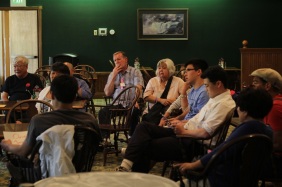
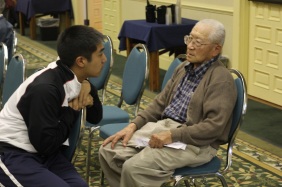

Permalink
March 8, 2014
Posted in 2014 Minidoka Pilgrimage, Friends of Minidoka, Japanese American Incarceration, Minidoka, Minidoka Pilgrimage, News tagged 2014 Minidoka Pilgrimage, Executive Order 9066, Minidoka, Pilgrimage, Scholarship, Youth, Youth Scholarship at 11:31 am by minidokapilgrimage
In an effort to continue to provide an experience of social justice in action, and to create diverse input, participation and energy, the Minidoka Pilgrimage Committee is proud to offer unique scholarship opportunities to students.
Student scholarship recipients are asked to assist with work activities before, and during, the 2014 Pilgrimage. All scholarship recipients are encouraged to be involved in the planning of subsequent Pilgrimages. The pilgrimage will be taking place this year from June 19- June 22.
Find the Scholarship form here: http://www.minidokapilgrimage.org/scholarships.html
Application deadline: Monday, April 14, 2014
The Scholarship Recipient will receive:
•Complimentary attendance to the 2014 Minidoka Pilgrimage. This includes transportation to and from Idaho from Seattle, registration costs, lodging, and all meals while attending the pilgrimage.
•The opportunity to serve on the Minidoka Pilgrimage Planning Committee and to assist with the planning for future pilgrimages.
Eligibility and Expectations:
•Must be a student at least 18 years of age or graduated from college in the past one or two years. Undergraduate and graduate students can apply.
•Is able to participate for the entire pilgrimage trip from Thursday, June 19 – Sunday, June 22, 2014.
•Will assist the Minidoka Planning Committee with duties while attending the pilgrimage
•Is able to attend the Minidoka Pilgrimage Planning Committee meetings prior to the pilgrimage
•Will create a project of your interest relating to the Minidoka Pilgrimage. This project can either be educational, a way to document the pilgrimage, or a way to help the Pilgrimage Committee. Past projects include: video of the pilgrimage, picture show, and creating a Pilgrimage evaluation survey.
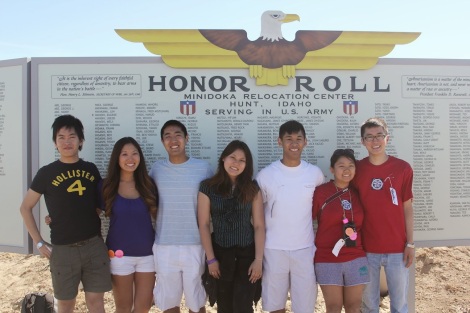
2013 Minidoka Pilgrimage Youth Scholarship winners
Photo by: Ryan Kozu
Permalink
January 28, 2014
Posted in Day of Remembrance, Friends of Minidoka, Japanese American Incarceration, Minidoka, Minidoka Pilgrimage, News, Taiko Festival tagged Day of Remembrance, Executive Order 9066, Japanese American Incarceration, Johnny Valdez y Uno, Kaze Daiko, Minidoka, Minidoka Pilgrimage, My Minidoka, Okinawan Taiko, Pilgrimage, Ringtaro and Asako Tateishi/The School of Taiko, Seattle Kokon Taiko, Seattle Matsuri Taiko, Seattle University, Taiko, UW Taiko Club at 9:07 am by minidokapilgrimage
Buy your tickets here at Brown Paper Tickets:
http://dayofremembrancetaiko.bpt.me
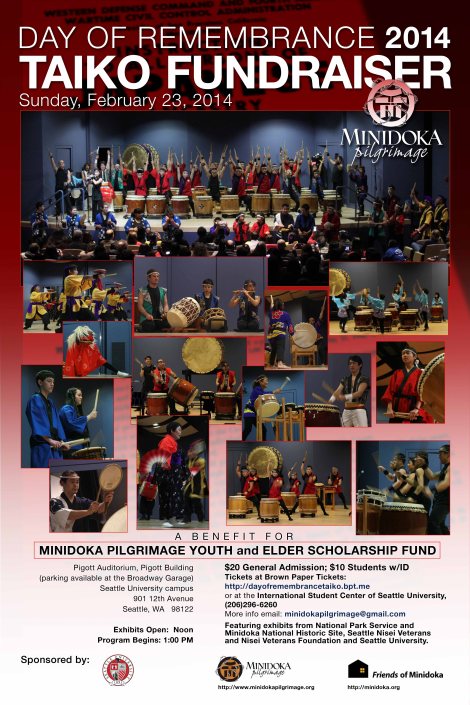
FOR IMMEDIATE RELEASE
Minidoka Pilgrimage 2014 Taiko Fundraiser
Seattle, WA – December 18, 2013 – In recognition of Japanese American Day of Remembrance and the 72nd anniversary of the signing of Executive Order 9066, the Minidoka Pilgrimage Planning Committee and Seattle University are proud to present the Day of Remembrance 2014 Taiko Fundraiser on Sunday, February 23, 2014. The event will open at Noon and the concert featuring taiko groups from throughout the Seattle area will begin at 1:00 p.m. Sunday, February 23rd in the Pigott Building on the campus of Seattle University, 901 12th Avenue in Seattle, WA. Tickets are $20 general, $10 for students with ID and can be purchased through Brown Paper Tickets, http://dayofremembrancetaiko.bpt.me. Parking is provided at the Broadway Garage of Seattle University. If attendees purchase tickets through Will Call, no actual tickets will be given, so please make sure to bring identification. For those unable to purchase tickets on-line, they will be available at the International Student Center of Seattle University in the James C. Pigott Pavilion for Leadership.
A free exhibit in the Paccar Atrium directly outside the auditorium will open at Noon and will feature displays from the Law Library of Seattle University, National Park Service and the Minidoka National Historic Site, and the Seattle Nisei Veterans and Nisei Veterans Foundation. Also featured will be original photographs in a collection called “My Minidoka” by Johnny Valdez y Uno. Raffle ticket sales and a general store will also be in the atrium to help support the work of the Minidoka Pilgrimage Planning Committee.
The concert benefits the annual Minidoka Pilgrimage to Twin Falls, Idaho. This will be the 12th year of the Pilgrimage. As one of the ten original War Relocation Authority (WRA) camps, the Minidoka National Historic Site is currently a part of the National Park Service and continues to be developed as an educational site. Currently there is an original Mess Hall and Barrack at the site of Block 22, as well as an original Fire Station, Warehouse and Root Cellar. Recent improvements include the Honor Roll, dedicated in 2011, which lists the names of approximately 1,000 individuals that enlisted from Minidoka and served in the army and 2014 will include the dedication of a restored guard tower at the entrance area.
The Day of Remembrance recognizes the date, February 19, 1942, when President Franklin D. Roosevelt signed Executive Order 9066, which forced 120,000 Japanese American citizens and legal residents into concentration camps during World War II solely based upon their Japanese descent.
Sponsors of this event include: The International Student Center, the Korematsu Center for Law and Equality, Seattle University and the Minidoka Pilgrimage Planning Committee.
Dale H. Watanabe
watanad@seattleu.edu
Minidoka Pilgrimage Committee/Seattle University
Permalink
November 6, 2013
Posted in Japanese American Incarceration, Minidoka, Minidoka Pilgrimage, News tagged American Concentration Camp, Book Review, Executive Order 9066, Idaho Statesman, Japanese American Incarceration, Minidoka, Minidoka National Historic Site, Minidoka Pilgrimage, Pilgrimage, Teresa Tamura at 11:21 am by minidokapilgrimage
Minidoka: An American Concentration Camp by Teresa Tamura can be purchased on Amazon
http://www.idahostatesman.com/2013/11/02/2848744/sad-pieces-of-idahos-past.html
Book Review: Sad pieces of Idaho’s past
Published: November 2, 2013
By Janice Hildreth — Book Addicts
Synopses: In “Minidoka: An American Concentration Camp,” Teresa Tamura documents one of 10 such camps — the Minidoka War Relocation Center in Jerome County.
Her documentation includes artifacts made in the camp as well as the story of its survivors, uprooted from their homes in Alaska, Washington, Oregon and California. The essays are supplemented by 180 black-and-white photographs and interviews that fuse present and past.
Ultimately, her book reminds us of what happens when fear, hysteria and racial prejudice subvert human rights and shatter human lives.
The 1942 wartime incarceration of Japanese Americans forced 120,000 people to abandon their property and homes. Most were American citizens.
“ ‘Surviving Minidoka’ is a history book about the present as much as the past,” said series editor Melissa Lavitt, dean of the College of Social Sciences and Public Affairs at Boise State University.
“This is not a book about camp life,” said co-editor Todd Shallot. “It is an art book and a tribute. It is a book about how an event shaped race relations more than a story about the event itself.”
My take: I chose to highlight both of these books because they document a part of Idaho history that many would like to ignore or forget and are written from two unique viewpoints.
While both books tell stories of the people who lived at Minidoka, in “Minidoka: an American Concentration Camp” you get a historical perspective of the people incarcerated there.
Their narratives, accompanied by photos, both old and current, relay their personal viewpoints, then continue with a recounting of the paths their lives took after they left. These recitations, culled from newspaper accounts and personal interviews, are brief and compelling.
In “Surviving Minidoka,” the creators grasped what Aristotle meant by “the aim of art is to represent not the outward appearance of things, but their inward significance,” and concentrated on the effect Minidoka had on individuals as shown through personal photos, art and poetry.
The stories are in-depth, giving a perspective of the fire Minidoka set that fueled its residents’ later accomplishments.
Despite the beautiful photography, this book, with its wealth of data and documentation, reads more like a report, and was saved only by the personal stories that put heart in the book.
My rating: Both are beautiful books, well worth owning, if for no other reason than to remind ourselves that what happened once could happen again if we don’t learn from the past.
Permalink
July 14, 2013
Posted in 2013 Minidoka Pilgrimage, Japanese American Incarceration, Minidoka, Minidoka Pilgrimage tagged 2013 Minidoka Pilgrimage, Children of the Issei, Dana Mar, Executive Order 9066, Japanese American Incarceration, Minidoka, Minidoka National Historic Site, Minidoka Pilgrimage, Pilgrimage, Poetry at 2:31 pm by minidokapilgrimage
Children of the Issei by Dana Mar
Upon a dream
In a ship set on the path of the rising sun
I sailed under the billowing black of a Japanese steam ship
The sea roared her protest and the ship creaked fear into our sleep
We, the voyagers of the Japanese, traversed the ocean over time and uncertain promises
We brought our bags, our skills, our culture, our dreams, and our legacy to the
Land of the Free
They discovered the red and the white of our nations
Were separated by the blue of the ocean, in which our stars fell one by one
Shot down by fighter pilots and blown to bits in Pearl Harbor
In a ship set on the path to the golden waves of grain
I ceased being Japanese and became the enemy
In the nightmare of war
I was the first-born in the United States
Just a Nisei in Issei arms
How could they, those Americans just like us, say
These nurturing arms are the arms of the enemy?
As if my parents had never braved the blue waves to live under the stars and stripes
As if my loving mother could kill as well as she breathed life in a family
My family
Put into “camps” so desolate and so removed from our homes that someone once said
Will they let us die here or kill us first?
Two bags and our own arms to hold the past and future of every family
We were given mere days to leave home behind
All she could carry were her children and her American dream
Shattered by Japanese bombs
Those days were framed in barbed wire and dust
They spit Jap in my eyes and blinded me to hope
We were all faithful to the red, white, and blue
So I swore on my mother’s fear
My children would not be Japanese
Because I was equal in the eyes of God
Equal in my Asian eyes
The eyes that stood witness to the red of the rising sun
The red of the blood shed for atomic bombs that blew up the whites of our eyes
I became Sansei
I grew up knowing little of what that meant
I grew up as an American
Not quite knowing why other kids asked how I spoke such good English
The war had not ended with a mushroom cloud
I fought the shrapnel that threatened to cut my feet as I walked
Down a dusty road
And back to a place where barbed wire pierced my eyes
Pierced my heart
And told me that I had to say something
I woke up and I was Yonsei
Fourth generation in the United States
1942 became a paragraph briefly mentioned in a small classroom
I lived in an alien nation
In alienation
As my peers were deceived by Asian stereotypes
I was a type of person
But somehow not quite a person
My mother’s words echoed on the cases of three men
Korematsu, Hirabayashi, Yasui
In three generations of Japanese Americans
I found a suffering and a sadness that embraced my heart, seventy years later, in tears
But in that ship set on the path of the rising sun
I rose the sails of my voice and became more than my face and my meager height
The words of those who lost themselves in a concentration camp
Resonated stronger than the shockwaves of Nagasaki and Hiroshima
Japanese American became a badge of pride
It was silly when friends became honorary Asians
But from a people feared and hated so strongly once before
I became the dream
Once upon a dream
In a ship set on the path of the rising sun
Over an ocean of every color in one
I dreamt of being an immigrant
An enemy
A prisoner
A mother
A daughter
A legacy
A voice
I opened my eyes to see the sun rise
And woke together with purpose in my voice
And determination in my eyes
We were all American
All proud children of the Issei
Permalink
Posted in 2013 Minidoka Pilgrimage, Japanese American Incarceration, Minidoka, Minidoka Pilgrimage tagged 2013 Minidoka Pilgrimage, A Wooden Heart, Dana Mar, Executive Order 9066, Japanese American Incarceration, Minidoka, Minidoka National Historic Site, Minidoka Pilgrimage, Pilgrimage, Poetry at 2:27 pm by minidokapilgrimage
A Wooden Heart by Dana Mar
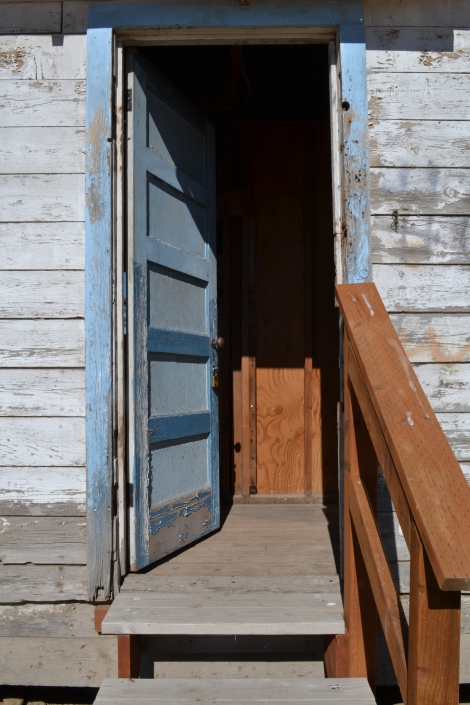
They close their eyes and hide their tears
Not looking at the horrible sights and fears
Know happiness and laughter, don’t look away
I can’t help anyone with nothing to say
Thus why I keep living with care
I protect all I can, just try me: I dare
We thought we would die in that lonesome camp
The face of my race became a terrorists’ stamp
I opened the door to a shoddy shack
And lived with dust blowing through every crack
To make the most of our situation
We built schools and a fire station
Some volunteered for the war effort
Loyalty to the States never fell short
Regretfully hope was lost at times
When we remembered our nonexistent crimes
To doubt one’s self, is to doubt another
Part of you might be a friend or brother
Don’t jump to judge by nationality
Even you are a native fallacy
In Minidoka I had a wooden heart
After these years, I’ve got to restart
Fly above the trees, soar below the stars
It is a process now, to heal all the scars
A smile can brighten even the darkest days
Just one rain-drop laugh, clears away the haze
I returned to that desolate campsite
The memories came back in new light
Feelings of fear and resentment
Melted away in American testament
I felt the tears passing through that door
Seeing the desolation of camp once more
I looked at it thoughtfully from afar
A blue wooden door standing just ajar
Where now my heart stands wide open
I am made of stronger stuff, unbroken
The future of the past is held in Yonsei hands
Where now that old wood building stands
Hope is rebuilt for a future of
Uneasy prejudice turned communal love
Permalink
Next page











